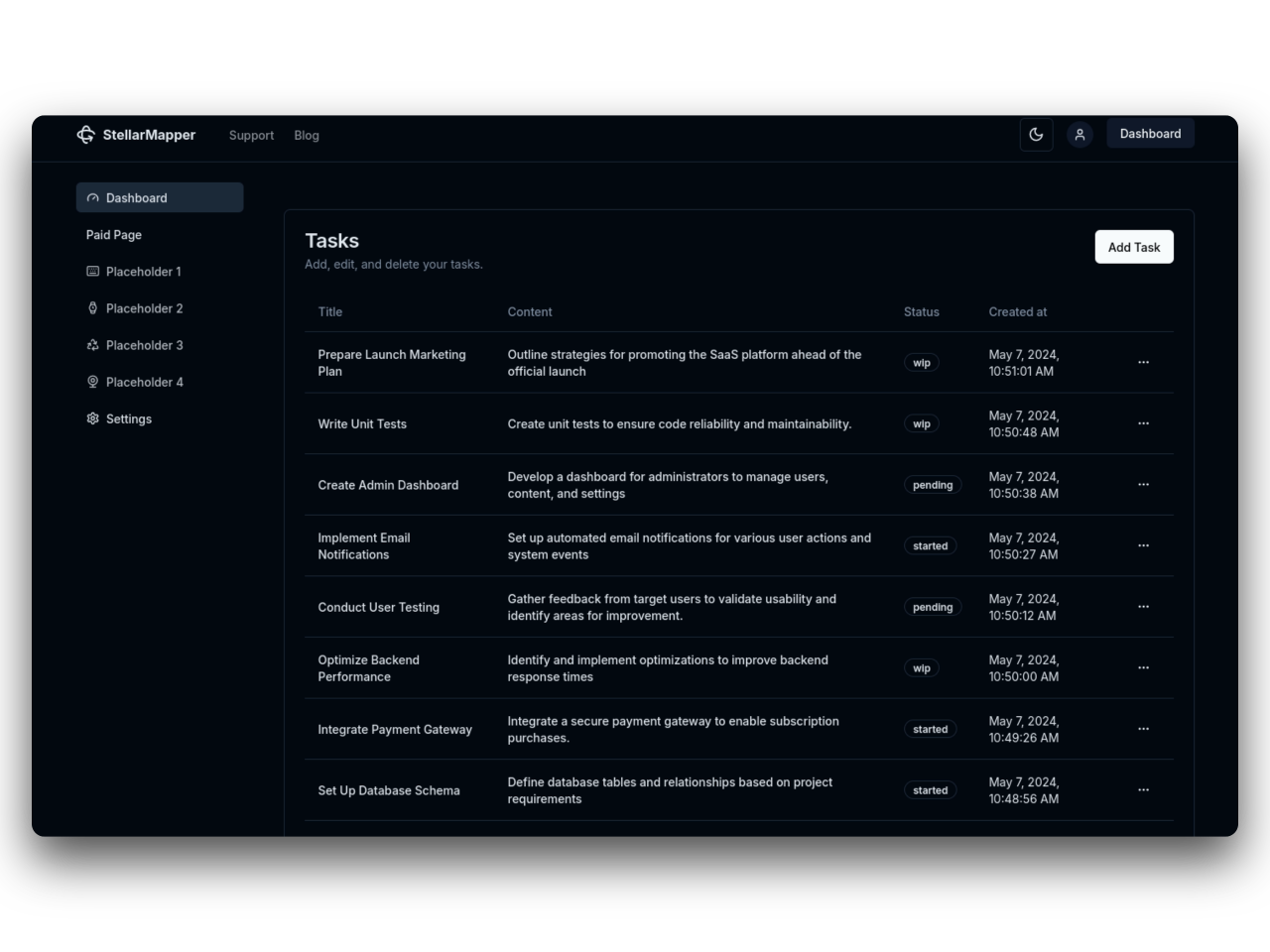Next.js Boilerplate: Your SaaS Launchpad
Introduction
Launching a Software as a Service (SaaS) application can be an exciting but daunting endeavor. With so many moving parts—frontend development, backend services, deployment strategies, and scaling—it's easy to feel overwhelmed. This is where a solid framework, like Next.js, comes into play. Next.js, a React-based framework, offers an innovative structure that streamlines the development process, making it the ideal starting point for your SaaS journey. In this blog post, we'll explore how Next.js serves as a boilerplate for your SaaS application, highlighting key features, best practices, and tips for development efficiency.
What is Next.js?
Next.js is a React framework that allows for server-side rendering (SSR) and static site generation (SSG), offering unparalleled performance and flexibility. It simplifies routing, API integrations, and asset bundling. With features such as automatic code splitting, image optimization, and a plugin system for adding features, Next.js is becoming the framework of choice for many developers looking to create modern web applications.
Why Choose Next.js for Your SaaS Application?
1. Performance Optimization
Next.js is designed with performance in mind. Applications built with Next.js benefit from:
- Automatic Code Splitting: Only essential code is loaded at runtime, making your apps faster and more responsive.
- Image Optimization: The built-in Image component optimally serves images depending on the user’s device, enhancing loading times and reducing bandwidth.
- Static Site Generation (SSG): Pages can be pre-rendered at build time, significantly improving performance for static content.
2. Scalability
A SaaS business requires a strong foundation that can grow with increasing user demands. Next.js allows for easy scaling:
- API Routes: Next.js can handle API routes alongside your frontend pages, allowing you to build full-stack applications in a single project.
- Serverless Functions: Seamlessly integrate serverless functions for backend processes like payment handling, user authentication, and data processing.
3. Developer Experience
The development experience can make or break a project. Next.js prioritizes:
- Hot Module Replacement (HMR): Instantly see the changes you make without having to refresh the browser.
- Rich Ecosystem: Harness the power of the React ecosystem including a multitude of libraries, packages, and tools.
4. SEO-Friendly
With built-in support for SSR, Next.js helps you create SEO-optimized web applications out of the box:
- Pre-rendering: Pages are served as fully-rendered HTML at the time of the request, which search engines can easily index.
- Dynamic Routing: Easily create routes for your SaaS application that cater to your business model and enhance user experience.
Essential Features for Your SaaS Boilerplate
1. User Authentication and Authorization
In a SaaS application, managing user identity is critical. Implement a secure authentication flow using:
- OAuth Providers: Allow sign-in through Google's or Facebook's OAuth services.
- JWT Tokens: Utilize JSON Web Tokens to ensure secure data transmission and user authentication.
2. Data Management and State Handling
Managing application state and data effectively is crucial for responsive user interfaces. Consider using:
- State Management Libraries: Libraries like Redux or Zustand can help manage app state, while SWR or React Query can handle server state.
- API Integration: Design API endpoints to manage CRUD operations for business data.
3. Payment Processing
Handling subscriptions and payments is a fundamental aspect of any SaaS application. Use a trusted payment gateway to facilitate transactions securely.
4. Analytics and Monitoring
Implement analytics tools to monitor user behavior and track KPIs. Google Analytics, Mixpanel, or custom analytics via server-side logging can provide valuable insights.
5. Responsive and Accessible UI
Design a user interface that is not only responsive but also adheres to accessibility standards. Use CSS frameworks, like Tailwind CSS or styled-components, to streamline the styling process.
Best Practices for Building Your Next.js SaaS Application
1. Organized Code Structure
Keeping your codebase organized is crucial for maintenance and scalability. Consider a structure similar to:
/pages - Contains all routes
/components - Reusable components
/styles - Global styles
/public - Static assets
/utils - Utility functions
2. Modular Components
Break down your UI into smaller, reusable components. This not only enhances maintainability but also improves collaboration among team members.
3. Environment Configuration
Utilize environment variables to manage configurations for different environments (development, staging, production). This makes switching configurations seamless and secure.
4. Continuous Deployment
Implement CI/CD pipelines to automate your development process. Tools like Vercel or Netlify offer simple integration for Next.js applications, allowing for easy deployment and versioning.
5. Testing Strategy
Incorporate a robust testing strategy using tools like Jest and React Testing Library to ensure application stability and functionality. This is particularly vital for a SaaS application where every feature can impact revenue.
Conclusion
Next.js serves as a powerful boilerplate for launching your SaaS application. By leveraging its robust features for performance, scalability, and developer experience, you’re not just creating a product; you’re setting the stage for success. With focused planning, a clear structure, and a commitment to best practices, you can build a SaaS solution that is not only functional but also delightfully responsive and user-friendly.
As you gear up for your launch, remember to continuously iterate based on user feedback and analytics. The journey of building a SaaS platform is ongoing; embrace the challenges and celebrate every milestone. Happy coding!
Whether you’re a seasoned developer or a newcomer to the world of web development, Next.js provides a flexible, easy-to-use foundation to transform your SaaS idea into reality. Let the framework propel your launch into a resounding success!
